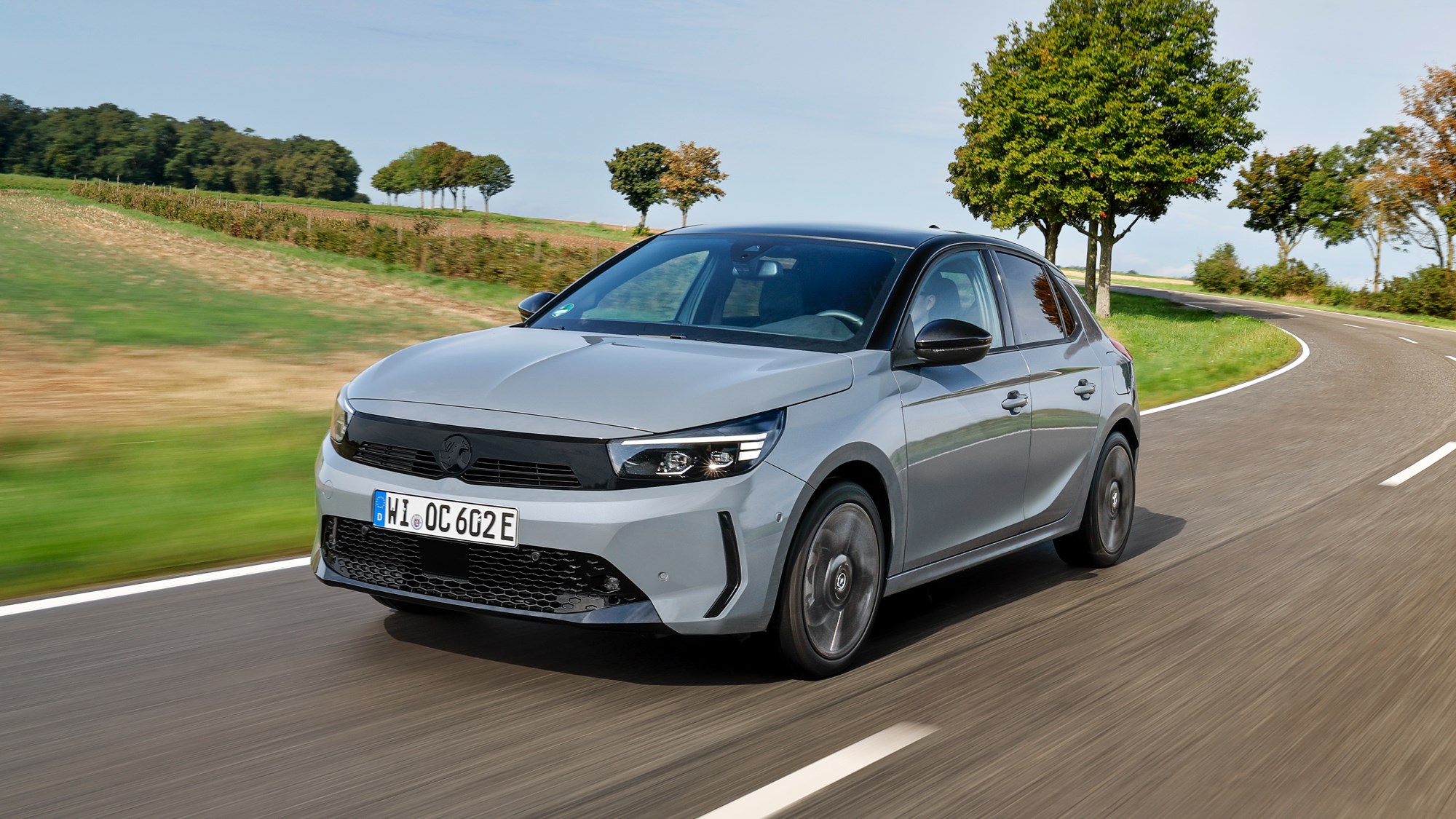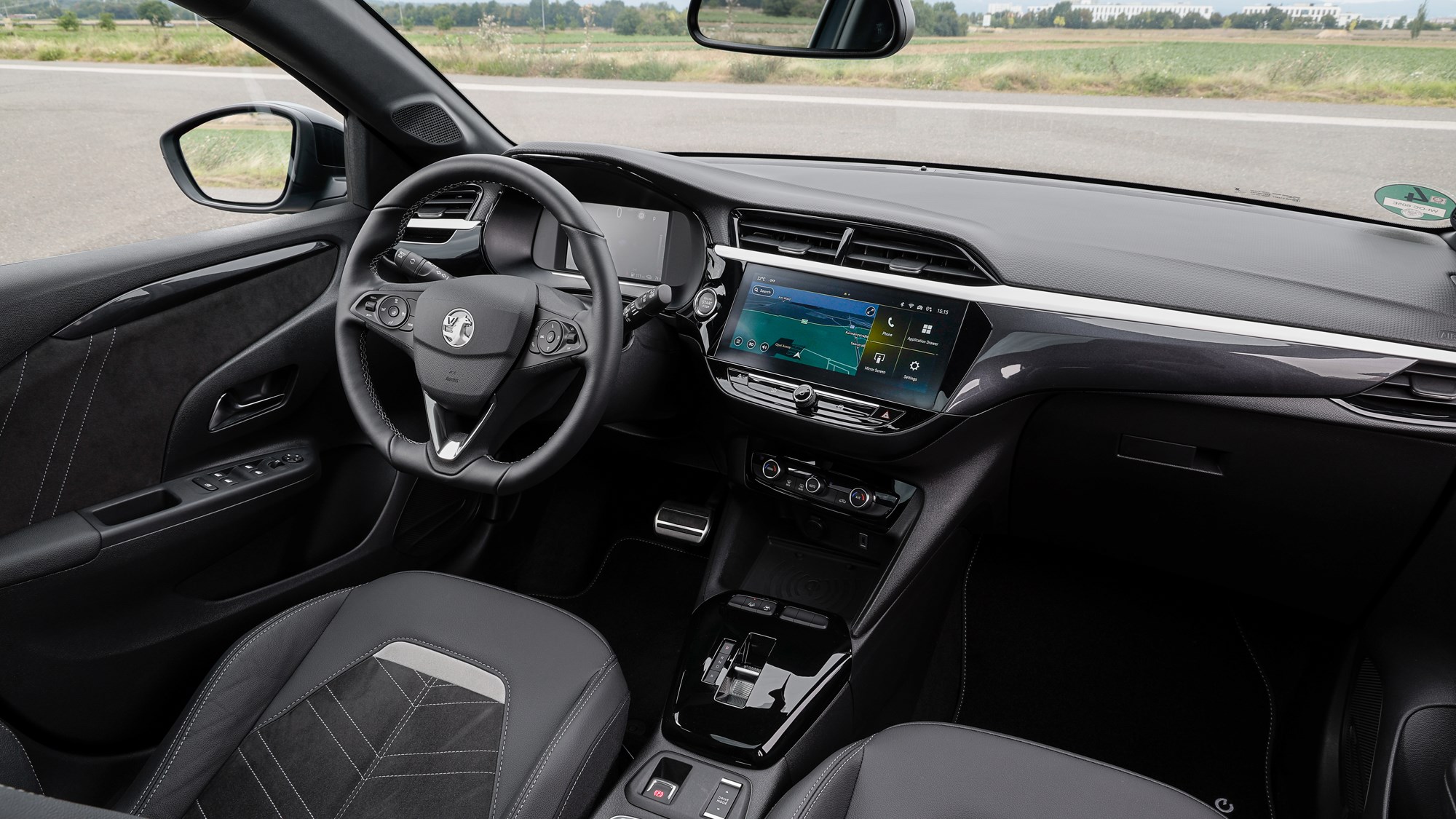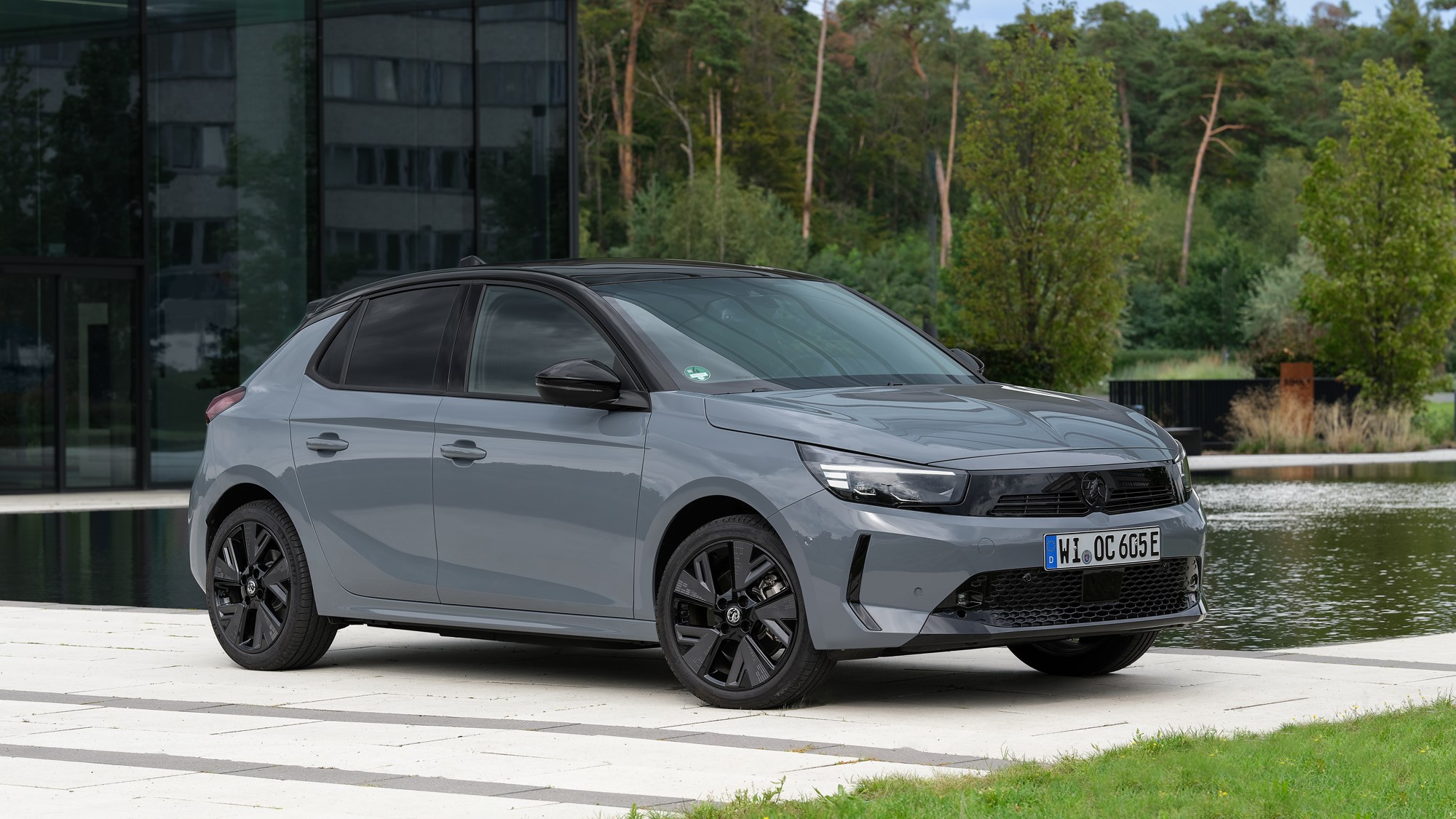► Facelifted Corsa Electric driven
► Fresh looks, new battery, more power
► Price dampens its appeal somewhat
The Corsa has been a runaway success for Vauxhall. If you include the figures for the combustion-engined variants, it’s the most popular car in Vauxhall’s European line-up, accounting for 40% of the company’s total sales. British drivers love it, too. It hasn’t dropped off the podium in the UK sales charts since 2020 – and it was our best-selling car for 2021.
Now, Vauxhall has launched a facelifted version of the Corsa and we’ve been to Germany to drive it before it lands on British shores later this year. Changes include a fresh front end, updated interior technology and, most importantly, a new 51kWh battery pack and more efficient 154bhp electric motor that promise to increase the supermini’s maximum range to 246 miles.
But are these tweaks enough to keep British buyers flocking to the Corsa? The small electric car market has evolved quickly over the past four years – and the Corsa Electric is now jostling for position with a growing pool of rivals, lots of which are considerably cheaper.

To give you an idea of how hard the winds of change are blowing, Vauxhall’s updates have increased the Corsa Electric’s price to around the same level as the notoriously expensive Honda e. Prices start from around £32,500 and climb to a shade over £38,500 for the range-topping Ultimate mode.
That’s an awful lot of money to spend on a supermini, especially in these austere times. The Chinese brands have recognised this opportunity and are advancing on the UK to swallow up the affordable end of our market with cars such as BYD Dolphin and MG 4.
They’re good cars, too, which is bad news for Vauxhall because it means this revised Corsa Electric needs to be utterly brilliant to justify its higher price. If it isn’t, the UK’s sales charts might look very different by the end of next year.
So, have Vauxhall’s changes made the Corsa Electric better?
Broadly yes. We’ll start with the car’s new powertrain. The bigger 51kWh battery pack has made the Corsa Electric a little more long-legged, although it still won’t meet Vauxhall’s official range claims. We haven’t yet had the chance to empty its battery completely, but our initial impressions suggest the upgrade has increased the Corsa’s real-world range from 180 miles to around 200 miles. That’s good considering the rather modest increase in battery capacity.
The Corsa new, range-topping electric motor has a healthy 154bhp, which looks great on paper. It even shaves a few tenths off the supermini’s 0–62mph time, cutting it down to 8.2 seconds. However, because both electric motors produce 192lb/ft of torque, the new motor barely feels any quicker on the open road.
Just to be clear, you can still have the Corsa with its original 50kWh battery pack and 134bhp electric motor. It’s fitted as standard to the entry-level Design and mid-range GS versions of the car – and we reckon the only reason you should opt for the more powerful motor is if you need the extra range.

Because both versions of the Corsa have similarly sized battery packs, their charge times are comparable. Using a 7.4kW AC wallbox, both cars will fully recharge in around 7.5 hours, while a 0–80% charge from a 100kW DC rapid charger takes just 30 minutes.
The new infotainment screen is a welcome improvement. By the time early 2024 rolls around, the Corsa Electric will only be sold with a 10.0-inch infotainment system which is more responsive and sharper than the old car’s entry-level 7.0-inch screen. As a bonus, you also get wireless Apple CarPlay and Android Auto as standard.
But while the new screen is an improvement, it isn’t perfect. It can be a little laggy when swapping between screens and Vauxhall’s built-in sat-nav system is rather confusing. Like most sat-navs, it has a little arrow to mark your position on the road – but it vanishes from the screen when you’re driving down a motorway which makes it easy to miss your exit.
How does the new Vauxhall Corsa Electric drive?
Exactly the same as the pre-facelift model, which is no bad thing. Normally, when manufacturers slot bigger batteries into their EVs, it negatively affects handling because the chassis is being asked to control an extra couple hundred kilos. Not with the Corsa.
Vauxhall achieved the extra battery capacity by stacking fewer, larger cells under the Corsa’s body. The result is that the 51kWh model is fractionally lighter than the 50kWh model – and that means both cars share the same neutral handling characteristics.
The Corsa Electric’s suspension is also stiffer than the petrol car’s. However, it needs to be to control the added weight of the electric powertrain because, despite Vauxhall’s efforts, the EV is still around 400kg heavier than the lightest combustion model. It’s quite firmly sprung, which contrasts the softness (verging on galumphing) of the Peugeot e-208.

Happily, there’s an upside to the harsher chassis. Because the Corsa Electric carries its weight closer to the ground, it feels a little more planted than the petrol car. Its weight distribution is also split far closer to 50/50 than its petrol counterpart which, when paired with the stiff suspension, means you can tackle corners more aggressively. It’ll stay flat, even if you’re driving like a lunatic.
You need to be quite brave to drive it quickly, though. The added weight of the battery pressing down on the wheels gives the Corsa Electric a rather uncanny feeling of grip. It feels sticker than it is, which makes it harder to judge where the limits are.
Vauxhall hasn’t altered the Corsa’s steering, either. It shares the same lifeless setup as the previous car which is a real shame considering the electric model shaves down the number of controls the driver can interact with by a third. It is, at least, well weighted in Sport mode. And to be fair to Vauxhall, this is a trait shared by every car based on Stellantis’ e-CMP2 architecture, including the Fiat 600e, Jeep Avenger and Peugeot e-208.
What’s the Corsa Electric’s interior like?
Vauxhall has made some well-placed changes to the Corsa Electric’s cabin to make it look and perform better than the previous car’s. Aside from the larger infotainment screen, the biggest change is the new rocker switch automatic gear selector, which has been pilfered from the Astra. It makes it easier to access the storage tray under the climate control panel.
There are some fresh interior upholstery finishes (including an Alcantara option) and a new massage function for the driver’s seat, which help make the cabin feel a little more premium. In fact, build quality is comparable to the likes of the Volkswagen Polo and Hyundai i20, which is high praise considering how ropey previous generation Corsas felt.

Just beware – if you want all the fancy technology, make sure you have a healthy bank balance. Vauxhall has pared back the Corsa’s trim range and scythed through its options list which means, if you want the fancy massaging seats and adaptive LED headlights, the only way you can have them is by forking out for the range-topping Ultimate model.
The Corsa Electric isn’t the most practical car for its class, either. Space in the rear is tight with a tall driver ahead and its boot is considerably smaller than the petrol Corsa’s. The battery pack hacks 42 litres out of the supermini’s luggage compartment, taking space down to 267 litres – and that could be a dealbreaker for those with young families or cumbersome hobbies. What’s more, the BYD Dolphin (which is around £7,000 cheaper) has more space in the back for passengers and an extra 78 litres of boot space.
Vauxhall Corsa Electric: verdict
Vauxhall’s facelift tweaks have made the Corsa Electric a much more desirable car. Its styling now stands up to the likes of the razor-sharp Peugeot e-208 and updated Renault Clio, while its new electric powertrain promises to make the car more usable day-to-day.
The problem with the Corsa (and, indeed, most small electric cars from the western world) is its price. We’re concerned that buyers won’t spend the extra money on a Corsa Electric when faced with the wave of cheaper, equally talented Chinese rivals, especially in the current financial climate.

If you want a cheap electric supermini, you’d probably be better served by the BYD Dolphin. Alternatively, if you want to spend the same amount of money you would on a Corsa Electric, you could bag a Smart #1 for the same prices as a mid-range GS model – and the Smart is more spacious inside, much faster in a straight line, more comfortable and better in the corners.
The Corsa Electric is still a great small electric car, but its monopoly on the class might be about to end. The previous version of the car was good and more affordable than its rivals, which made it an easy purchase. But rival brands are recognising the importance of the class, and they’re moving into the space with enough aggression to force Vauxhall out if their cars can generate enough interest with the public. We’re curious to see whether outright affordability will trump brand loyalty over the next year. Watch this space. The small car market might have a new king by the end of 2024.